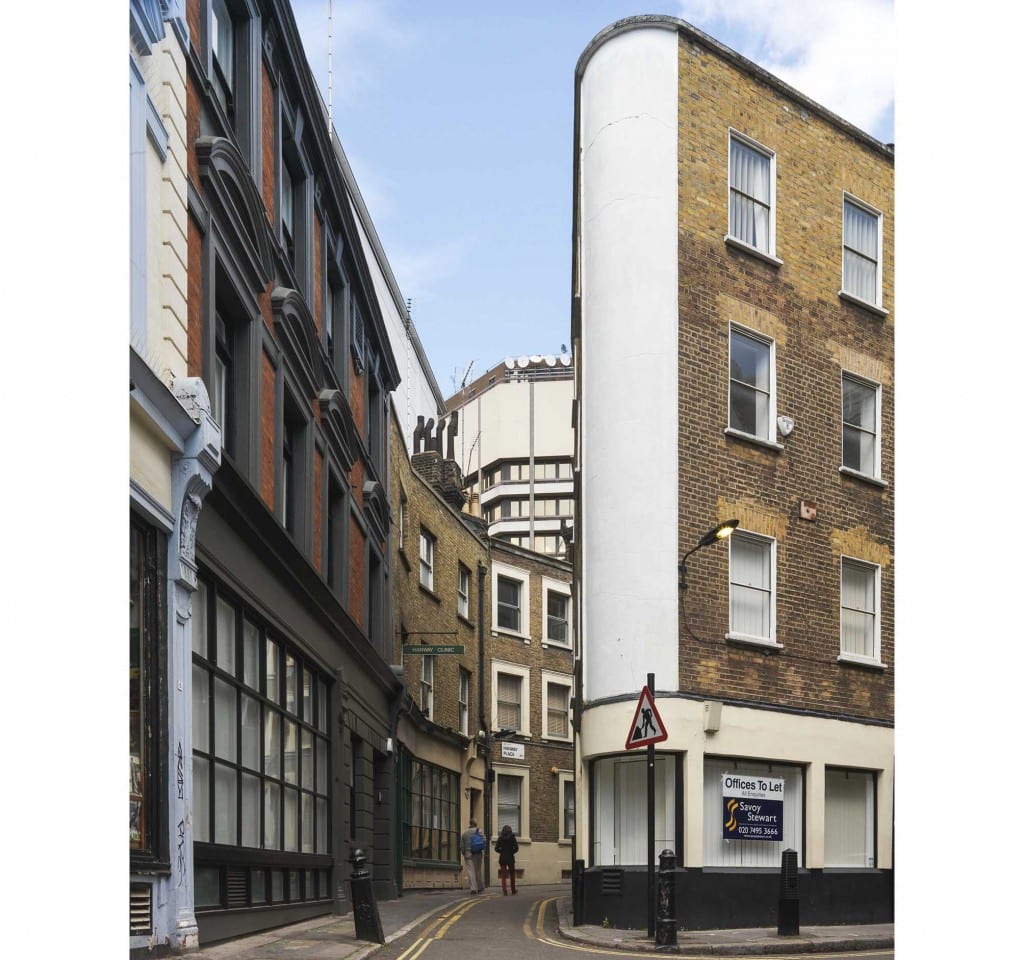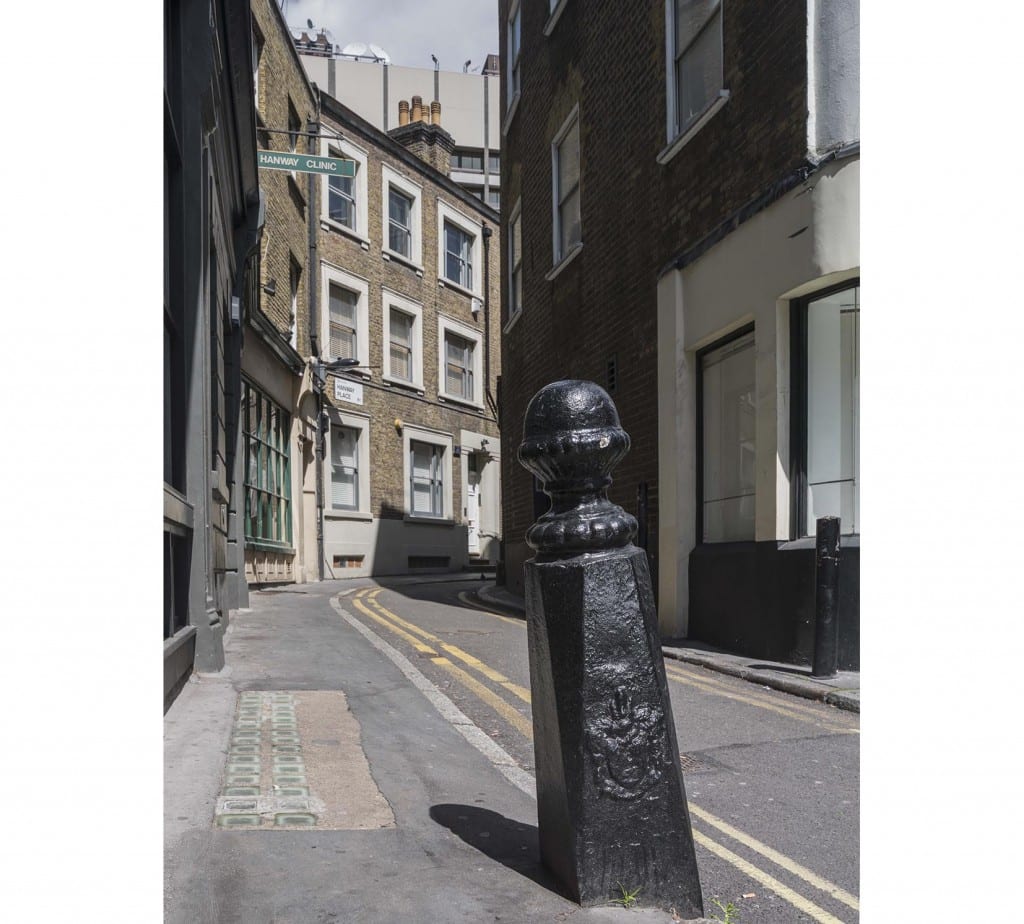Hanway Street 1
By the Survey of London, on 2 December 2015
The narrow byway that is Hanway Street, off which Hanway Place loops even more obscurely, is a vestige of irregular development unique in Marylebone. This is the first of two posts on Hanway Street, the second of which will explore its character in more recent years.

Extract from the Ordnance Survey First Edition map of London XXXIV, showing Hanway Street c. 1870 (Reproduced by permission of the National Library of Scotland). If you are having difficulty viewing images, please click here.
In origins, topography and status Hanway Street relates more closely to late seventeenth-century growth in neighbouring St Giles in the Fields. Joseph Girle was the main late seventeenth-century landowner hereabouts. Rebecca Girle, the daughter and heir of his only son, married Major John Hanway, a Board of Ordnance engineer who was engaged from 1709, inter alia, in the fortification of Harwich and Sheerness. After 1718 the Hanways appear to have settled to a quieter life in what had been Girle’s house on Oxford Street. The Major served as a local magistrate and, Cambridge-educated, published Latin versions of Psalms in 1723 and translations from Horace in 1730, also tackling Catullus, Martial and other poets before his death in 1736. A teenage nephew, Jonas Hanway, later an eminent reforming philanthropist, probably stayed with his uncle in 1727–8.

View of Hanway Street from the north-west in 2015, showing (from the left) Nos 42, 40, 38 and 36 (© Historic England, Chris Redgrave)
Behind the house lay Hogsty Alley, alternatively Marybone Mews, with extensive stables as might be expected in such a marginal location. Hanway, who was used to overseeing building, undertook modest brick development of his small estate. He formed a new street, giving it an arc to bisect yards to its north and south and to open onto the two nearby main roads. A cornerstone of 1721 marked and named Hanway Street. By 1723 the north side had five houses, at least one with a shop, and there were eight houses on the south side. Five more went up in the mid-1720s and others followed in what were sometimes called Hanway Rents, later Hanway Yard. Some small sense of what Hanway Street’s first development was like may still be gained from the property at No. 40.
From 1726 John Petty, a Soho joiner, took stables and a carpenter’s yard to the north and laid out what is now Hanway Place as Petty’s Court and, to its east, John’s Court. These frontages were by 1738 gradually built up with eighteen small brick houses. Many early occupants were identified in ratebooks as poor.

A view looking north to Hanway Place from Hanway Street (© Historic England, Chris Redgrave)
Occupancy of this enclave in the 1790s was mixed and commercial, few addresses not housing either a shop or a tradesman. Tenancies were often short and the courts were said to be ruinous and occupied by the very poor ‘of the worst description’. [1] A bookshop at the west end of the straight section of the street’s south side was taken by William Godwin in 1805 at a low point in his career. He traded here with (and behind) Thomas Hodgkins, a publisher, until 1807 as the Juvenile Library, for the sale of children’s books including those written pseudonymously by Godwin (for example Edward Baldwin’s Fables, Ancient and Modern) and the Lambs’ Tales from Shakespeare.
Edward Holmes Baldock also had premises and a yard on the south side of Hanway Street from 1805, first dealing in china and glass, then by the 1820s in antique furniture. He operated at the top of this trade, supplying royalty and remaking and designing as well as selling high-quality furniture. Numerous other antique dealers and restorers followed. On the site of No. 42, near Oxford Street, Charles Gast had a ‘muffin shop of some celebrity’ from the 1820s, continued by his wife and son into the 1860s. [2]
Hanway Place was redeveloped in the 1880s and the south side of Hanway Street in the early 1890s for Frascatis, the great Oxford Street Restaurant, and enlargement of the Oxford Music Hall, which was succeeded by the larger Lyons Corner House Restaurant from 1928.

Hanway Street and the Marylebone boundary bollard at the junction with Hanway Place (© Historic England, Chris Redgrave)
Sources
- City of Westminster Archives Centre, DD 3519
- Old Bailey Online, 18310217.
 Close
Close


